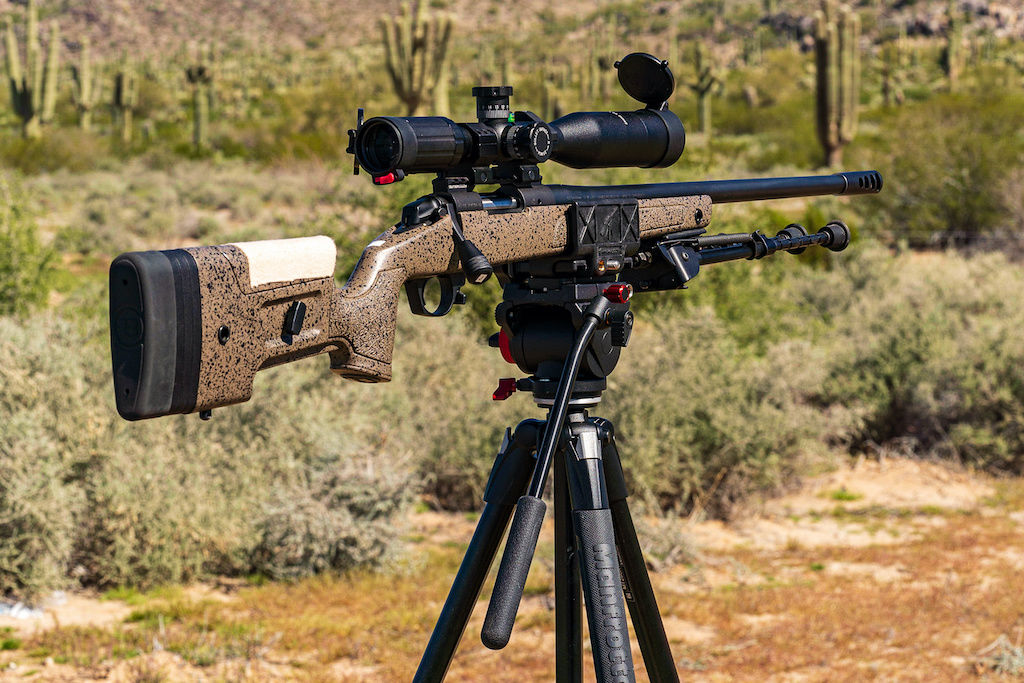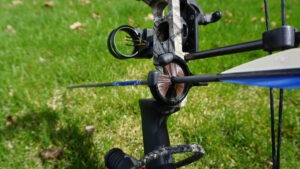In the world of firearms, the .45-70 caliber holds a special place. Its power and versatility make it a favorite among hunters and shooting enthusiasts. However, to truly unlock the potential of this caliber, it is crucial to understand the intricacies of powder reloading. In this article, we will explore the basics of powder reloading for .45-70 calibers and delve into the factors that make for the best powder choices.
Understanding the Basics of Powder Reloading
Powder reloading is the process of assembling your own ammunition by carefully measuring and combining the components. It offers several advantages, including cost savings and the ability to customize loads for specific purposes. For .45-70 calibers, mastering the art of powder reloading is essential to maximize performance on the range or in the field.
When it comes to powder reloading, there are various factors to consider. One of the most crucial aspects is choosing the right powder for your ammunition. The type of powder you select can significantly impact factors such as velocity, pressure, and accuracy. For .45-70 calibers, it is essential to choose a powder that matches the specific requirements of this caliber and the intended use of the ammunition.
The Importance of Choosing the Right Powder
Choosing the right powder for your reloads is not a decision to be taken lightly. Different powders have varying burn rates, which directly affect the performance of your ammunition. A faster-burning powder, for example, may generate higher velocities but can also increase chamber pressure. On the other hand, a slower-burning powder may provide more consistent velocities and better accuracy, but at the cost of reduced muzzle velocity.
Considering the .45-70 caliber, a versatile cartridge used for both hunting and target shooting, it is crucial to select a powder that strikes the right balance between velocity and pressure. For hunting purposes, a powder that delivers adequate velocity while maintaining manageable recoil is desirable. On the other hand, for precision target shooting, a powder that offers consistent velocities and minimal deviation shot after shot is preferred.
Furthermore, it is essential to take into account the bullet weight and type when choosing the right powder. Different bullets may require different powder charges to achieve optimal performance. For example, a heavier bullet may require a slower-burning powder to ensure proper stabilization and maintain accuracy over longer distances.
Safety Measures in Powder Reloading
Powder reloading requires strict adherence to safety measures. The components involved, such as primers, powder, and bullets, can be hazardous if mishandled. Always follow the manufacturer’s guidelines and recommendations when reloading ammunition.
One of the primary safety precautions is wearing appropriate safety gear. Safety glasses protect your eyes from any potential debris or powder particles that may become airborne during the reloading process. Ear protection, such as earmuffs or earplugs, is also essential to safeguard against the loud noise generated by the firing of ammunition.
In addition to personal protective equipment, maintaining a clean and organized reloading area is crucial for safety. A cluttered workspace increases the risk of accidents, such as spills or mix-ups between different components. It is recommended to have a dedicated reloading bench or area where all the necessary tools and components are organized and easily accessible.
Furthermore, it is important to handle powder with care. Store powder in a cool, dry place away from any potential sources of ignition. Always use a powder scale to measure the correct amount of powder for each load, as even a slight variation can have significant consequences on performance and safety.
By following these safety measures and taking the necessary precautions, you can ensure a safe and enjoyable powder reloading experience.
The .45-70 Caliber: A Brief Overview
The .45-70 caliber has a rich history and a wide range of applications. Originally developed for the U.S. military in the late 19th century, it has evolved into a popular choice for hunting and sport shooting. Let’s take a closer look at the history and key features of this remarkable caliber.
The History and Evolution of .45-70 Caliber
The .45-70 caliber was first introduced by the U.S. Army in 1873 for use in the Springfield Model 1873 Trapdoor rifle. Its development was a response to the demands of combat in the American Indian Wars. Soldiers needed a powerful and reliable cartridge that could effectively engage targets at long distances.
As the U.S. military continued to refine its firearms, the .45-70 caliber underwent various modifications and improvements to enhance its performance. These advancements included changes to the bullet design, powder charge, and overall cartridge dimensions. These improvements resulted in increased accuracy, muzzle velocity, and stopping power.
Outside of military use, the .45-70 caliber gained popularity among civilian hunters and sport shooters. Its reputation for being a hard-hitting round made it a preferred choice for hunting large game, such as bears and elk. The caliber’s ability to deliver a heavy punch at long ranges made it a favorite among long-range shooting enthusiasts as well.
Key Features of .45-70 Caliber
One of the defining characteristics of the .45-70 caliber is its sheer power. The large bullet diameter and heavy powder charge result in a cartridge that packs a significant punch. This makes it ideal for big game hunting, where the ability to quickly and effectively take down an animal is crucial.
Another key feature of the .45-70 caliber is its versatility. The cartridge can accommodate a wide range of bullet types and weights, allowing shooters to tailor their ammunition to specific hunting or shooting scenarios. Whether you need a heavy, hard-cast bullet for deep penetration or a lighter, expanding bullet for controlled expansion, the .45-70 caliber can deliver.
Furthermore, the .45-70 caliber’s versatility extends to the firearms that can chamber it. While it was originally designed for use in the Springfield Model 1873 Trapdoor rifle, it can also be found in lever-action rifles, single-shot rifles, and even some modern semi-automatic rifles. This wide range of firearms chambered in .45-70 allows shooters to choose a platform that suits their preferences and shooting style.
In conclusion, the .45-70 caliber has a storied history and continues to be a popular choice among hunters and sport shooters. Its power, versatility, and wide range of available firearms make it a formidable cartridge for any shooting application.
Factors to Consider When Choosing Reloading Powder
When it comes to selecting powder for .45-70 reloading, there are several key factors to consider. These factors can greatly influence the performance and effectiveness of your ammunition. Let’s explore two critical factors that demand careful attention.
Burn Rate and Its Impact
Burn rate refers to how quickly the powder ignites and burns during combustion. It is essential to select a powder with an appropriate burn rate for the .45-70 caliber. The right burn rate ensures optimal pressure and velocity, resulting in consistent and accurate performance.
When considering burn rate, it is important to understand how it impacts the overall performance of your ammunition. A powder with a fast burn rate will generate high pressure and velocity, which can be beneficial for long-range shooting. On the other hand, a slow burn rate powder will produce lower pressure and velocity, making it more suitable for short-range shooting or reduced recoil loads.
Furthermore, the burn rate can also affect the barrel life of your firearm. Using a powder with an incorrect burn rate can lead to excessive wear and tear on the barrel, reducing its lifespan. Therefore, it is crucial to choose a powder that matches the specific requirements of your shooting needs and firearm.
Powder Granule Size and Shape
The granule size and shape of the powder can affect the ammunition’s burning characteristics. The right combination of granule size and shape ensures consistent ignition and burn, minimizing variations and maximizing accuracy. It is crucial to choose a powder with granules that suit the .45-70 caliber.
When it comes to granule size, smaller granules tend to burn faster, while larger granules burn slower. This means that the size of the powder granules can impact the burn rate, which in turn affects the overall performance of your ammunition. Therefore, it is important to select a powder with granules that provide the desired burn rate for your specific reloading needs.
Additionally, the shape of the powder granules can also influence the burn rate and consistency. Some powders have spherical granules, while others may have flake or extruded shapes. Each shape has its own advantages and disadvantages, and it is essential to consider these factors when choosing reloading powder for the .45-70 caliber.
Spherical powders, for example, tend to meter more consistently, resulting in more uniform charges. On the other hand, flake powders can offer better load density, allowing for more consistent ignition and burn. Extruded powders, with their cylindrical shape, are often used for high-velocity loads, providing excellent performance in certain applications.
Ultimately, the powder granule size and shape should be selected based on the specific requirements of your firearm, shooting style, and desired performance. Taking the time to understand these factors and choose the right powder will greatly enhance the accuracy and reliability of your .45-70 ammunition.
Top Recommended Powders for .45-70 Caliber
After considering the essential factors, it’s time to explore some of the top recommended powders for .45-70 caliber reloading. Whether you’re looking for high-performance options or cost-effective choices, there are powders available to suit your specific needs.
Review of High-Performance Powders
For those seeking maximum performance, there are powders specifically formulated for .45-70 calibers. These powders offer consistent and reliable results, ensuring optimal velocity and accuracy. Some popular choices include Brand A and Brand B.
Cost-Effective Options for Beginners
If you’re just starting with .45-70 reloading or prefer more budget-friendly options, there are powders that offer excellent value for their price. These powders may not provide the same level of performance as high-end options, but they can still deliver satisfactory results. Budget-conscious reloaders often choose Brand C and Brand D.
The Process of Reloading .45-70 Caliber with Powder
Reloading .45-70 calibers with powder involves several steps. Let’s walk through a step-by-step guide to help you navigate the process with confidence.
Step-by-Step Guide to Powder Reloading
1. Gather all the necessary equipment and components, including cases, primers, bullets, and powder.
2. Clean and inspect the cases to ensure they are free from dirt, debris, and any signs of damage.
3. Resize the cases using a reloading press and appropriate die.
4. Prime the cases with fresh primers using a priming tool.
5. Measure and weigh the appropriate powder charge using a reliable scale.
6. Carefully pour the measured powder charge into each primed case.
7. Seat the bullets in the cases using a bullet seating die.
8. Inspect each completed round for any irregularities or defects.
9. Store the finished ammunition in a safe and secure location.
Common Mistakes to Avoid in Powder Reloading
While powder reloading can be a rewarding and engaging process, it is crucial to avoid common mistakes that can compromise safety and performance. Here are some pitfalls to watch out for:
- Failure to properly measure powder charges, leading to inconsistent performance.
- Using incorrect powder types, which can result in dangerous pressure levels.
- Neglecting to thoroughly clean and inspect cases, potentially causing malfunctions.
- Skipping safety measures such as wearing protective gear or working in a cluttered space.
By being aware of these potential pitfalls and following the correct procedures, you can ensure a smooth and successful powder reloading experience for your .45-70 calibers.
In conclusion, powder reloading for .45-70 calibers is a fascinating and essential aspect of maximizing the potential of this powerful caliber. By understanding the basics, considering key factors, and following proper procedures, you can achieve outstanding results. Whether you’re seeking high-performance options or budget-friendly choices, there are powders available to suit your needs. So, gear up, pay attention to safety, and embark on your journey to the best powder reloading experience for .45-70 calibers!


